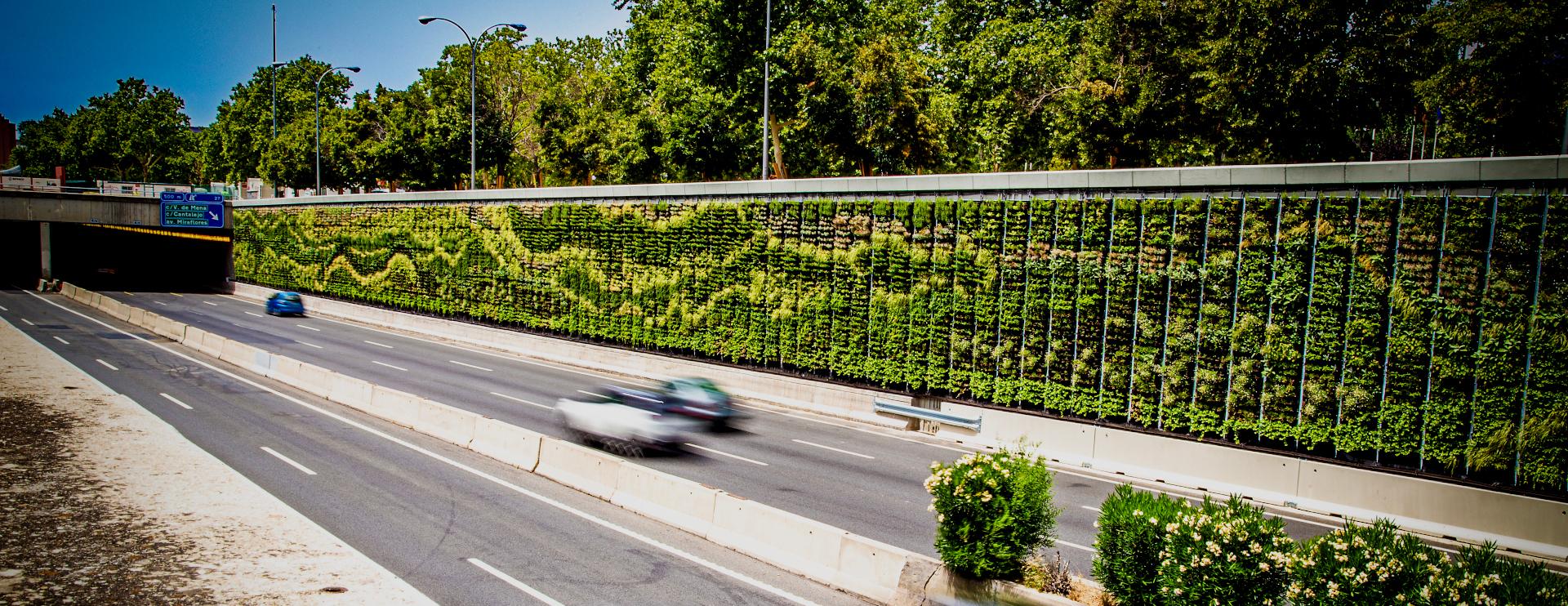
- Type of work:
- Roads
- Clients:
- Madrid City Council. Environment and Mobility Government Area
- Location:
- Spain
Urban mobility infrastructures. Lot 2. (Madrid)
Lantania, in a joint venture with Padecasa and Azul Repair, is carrying out, through a framework agreement with the Madrid City Council, the execution of different urbanization works and construction of urban infrastructures.
Among the actions, the works of the first phase of the vertical gardens of Calle 30 Natura stand out. The project has been developed on the 400 meters of walls of the M-30 ring road that separates the Mariano Salvador Maella and New Zealand roundabouts on La Avenida de la Illustration. The work has resulted in the largest vertical gardens in Europe.
The joint venture has covered 3,250 square meters of concrete walls with 23 highly durable plant species with the capacity to absorb pollutants. The project aims to improve the environment by reducing the urban heat island effect, reducing road traffic emissions and noise pollution, as well as improving the aesthetics of the city.
This pilot project will be used to study the effects of implementing this type of garden. Thus, pollution sensors have been installed to record the pollutant levels in the gardens. The data obtained will be compared with the general pollution data available from Calle 30 or from the pollution stations of the City Council of Madrid in order to show the difference in pollutant concentration between the different zones.
In addition, they have corrosion sensors along the walls, which allow the state of the current walls to be monitored, along with a system of folding panels that will facilitate supervision during their maintenance work.
The vertical gardens have a centralized and sectorized irrigation system with different sensors to show the impact and to adapt the irrigation to the needs. Each module or panel has horizontal irrigation pipes at different heights, which have drippers with different flow rates depending on their location in height to optimize the necessary irrigation.